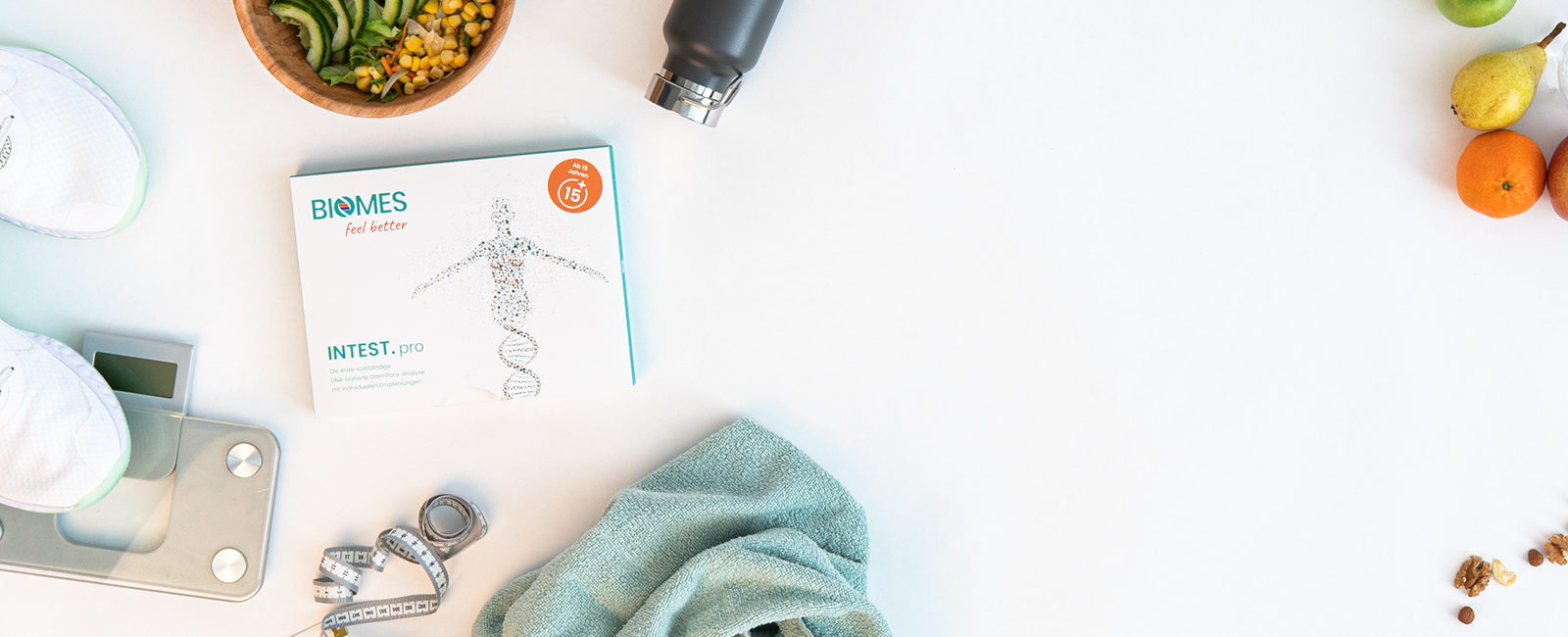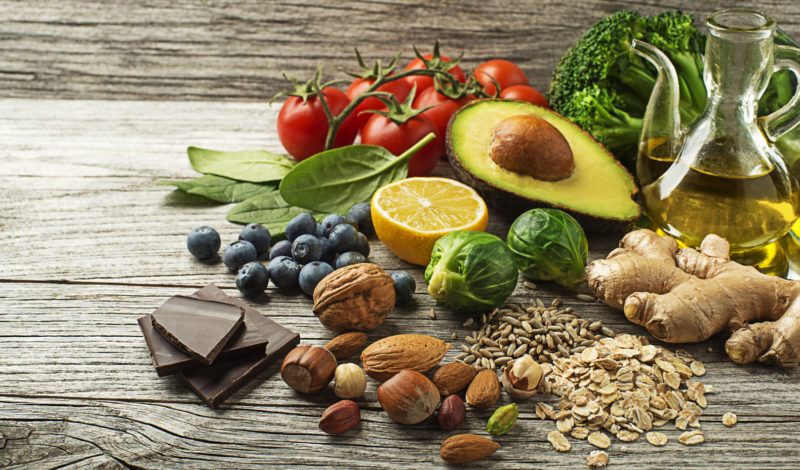Muscle building exercises are important at any age. At BIOMES you can find out what muscle building exercises should look [...]

Lose weight and build muscle: How is that compatible?
Build muscle and lose fat is based on different metabolic processes.
Build muscle and lose fat? And both have contradictory requirements – that means: building muscles and reducing body fat simultaneously is not possible! Nevertheless, you can lose weight in the long run by building muscle mass: Learn here how to balance weight loss and muscle gain.
Muscle building and fat loss: a contradiction?
To build muscle mass, an excess of calories is usually necessary – your body must receive more energy from food than it consumes. This additional energy is needed to adapt the muscles to the demands of training and to strengthen them in the regeneration process.
To lose weight, however, a negative energy balance is required: As soon as the body cannot cover its energy requirements with the calories from the food it consumes, stored energy reserves from the fat cells are used up.
So in what order do you approach muscle building and fat loss? Depending on your physical constitution there are two different ways:
For slightly overweight people, it may make sense to lose body weight first with a slight calorie deficit and a mixture of strength and endurance training. In this way, a light basic musculature is already built up, which can later be strengthened with targeted strength training.
If you are of normal weight, you can directly stimulate the muscle build-up with targeted strength training and will thus lose weight in the long term. Because the additional muscle mass also increases your basic calorie consumption. But in order to build up additional muscles, you need a calorie surplus. In the next step, the built-up muscles will make it easier for you to lose fat (but as already mentioned, weight reduction does not take place at the same time as muscle build-up, but only afterwards).
Build muscle and lose fat: An overview
The right combination of nutrition and training is essential for the success of muscle building.
Lose weight with muscle building – only possible with the right nutrition
For muscle building, an excess of at least 300 calories per day is required. If you not only want to build up muscles but also lose weight, the excess calories should not be too much above your normal total turnover. Otherwise, you will build muscle but also gain a lot of mass.
The most important nutrients for muscle growth are proteins. Especially beginners who build muscle quickly need a high protein intake: A common recommendation for people who want to gain muscle is to consume between 1.6 and 2 grams of protein per kilogram of body weight daily. The best way to achieve this is a combination of animal proteins, such as fish or low-fat dairy products, and vegetable proteins from soya, cereals, legumes and nuts.
Complex carbohydrates provide additional energy for strength training and are important for your intestinal health. Whole grain products, fresh fruit and vegetables provide your body with valuable fibre, vitamins and minerals.
Fat reduction: Slim with a healthy intestine
With the intestinal analyses according to Nature Reviews Genetics 2012 – INTEST.pro from BIOMES – you receive a comprehensive overview of your nutrient supply. Simply send a stool sample to our laboratory: the analysis of the scientists from BIOMES will then provide you with detailed insights into your calorie utilization, vitamin synthesis, immune strength and the distribution of bacteria in your intestine.
This will also tell you whether certain bacteria in your intestine make it difficult for you to burn fat and whether you should specifically support \”slimming\” intestinal bacteria with your diet. In addition, our nutrition tips will help you to improve your health and fitness in general.
The right training
As a beginner, it is best to concentrate on a whole body workout, in which all muscle groups are equally challenged. This is particularly suitable for deadweight training – it includes exercises in which only your own body weight is used as resistance (e.g. push-ups, knee bends etc.). It is easy to learn and does not lead as quickly to incorrect loading or injuries as the improper handling of weights.
In order to achieve significant muscle growth , you must challenge your muscles with high training intensities. Afterwards, you should allow the strained muscles 24 to 48 hours rest. During this time the muscle regenerates, nutrient depots are replenished and the muscle grows. Sufficient relaxation and at least seven hours of sleep per night support this process.
The built up muscle mass now increases your basal metabolic rate, which leads to a higher calorie consumption.
Keep muscles for a long time, burn body fat
If you have built up the desired muscle mass and now want to lose weight, you should reduce your excess calories step by step. However, you should still make sure that you eat a healthy and balanced diet to maintain the muscle mass you have built up. With endurance training, such as the highly intensive interval training (HIIT), and light weight training, you can now reduce body fat in a targeted manner.
Conclusion: muscle building can help with fat reduction
Muscles consume energy – even when at rest. Since stored body fat is also an energy supplier, a pronounced musculature supports the reduction of body fat in the long term. A prerequisite for this is that the energy taken in from food is not sufficient to completely cover the body\’s energy requirements. The basis for efficient fat burning is therefore a balanced diet including a slight calorie deficit and strength and endurance training.
Test your intestinal flora now!
You want to combine nutrition and sport in the best possible way? Our intestinal flora self-test for at home will tell you how.



